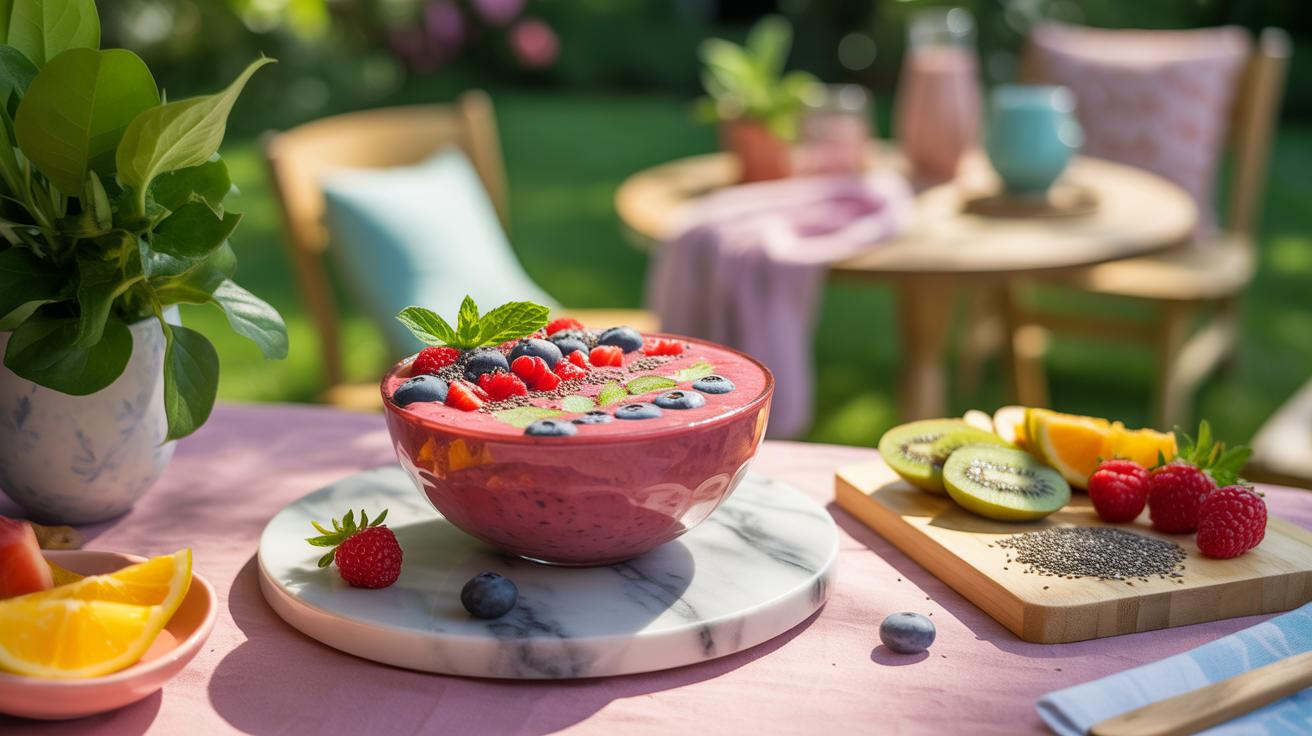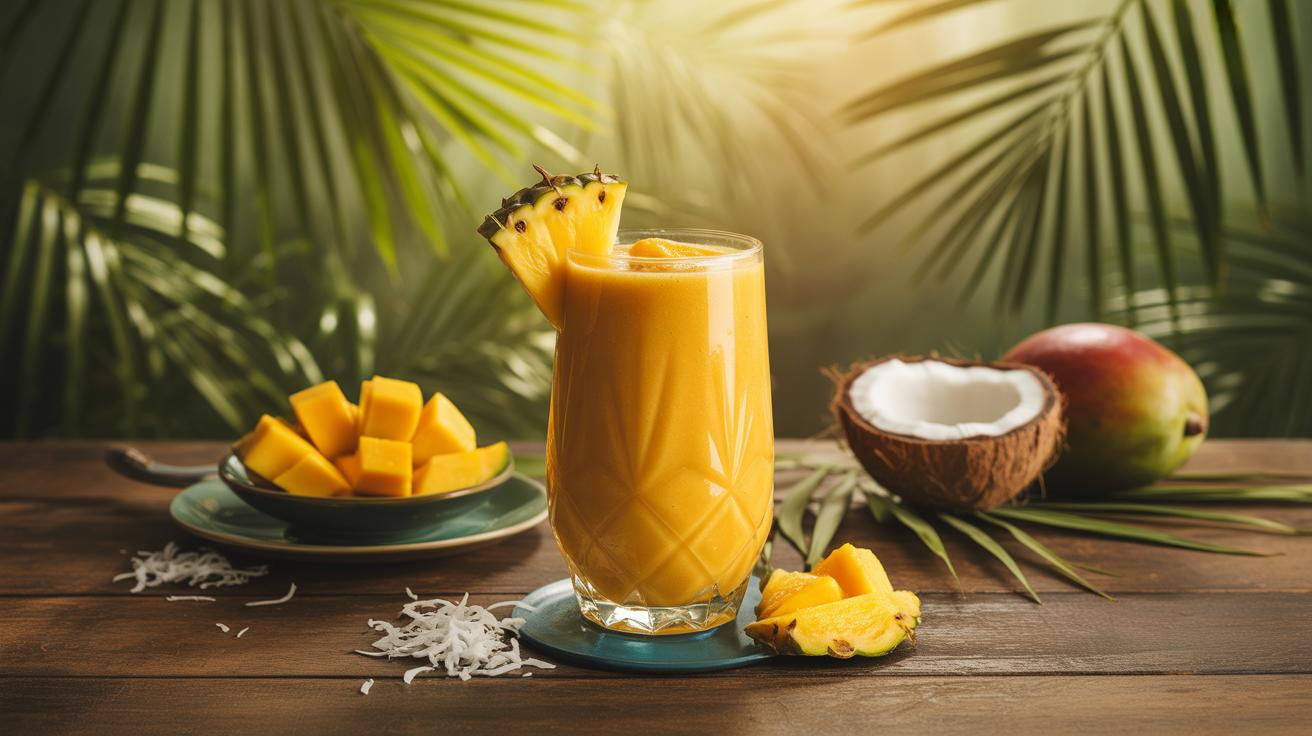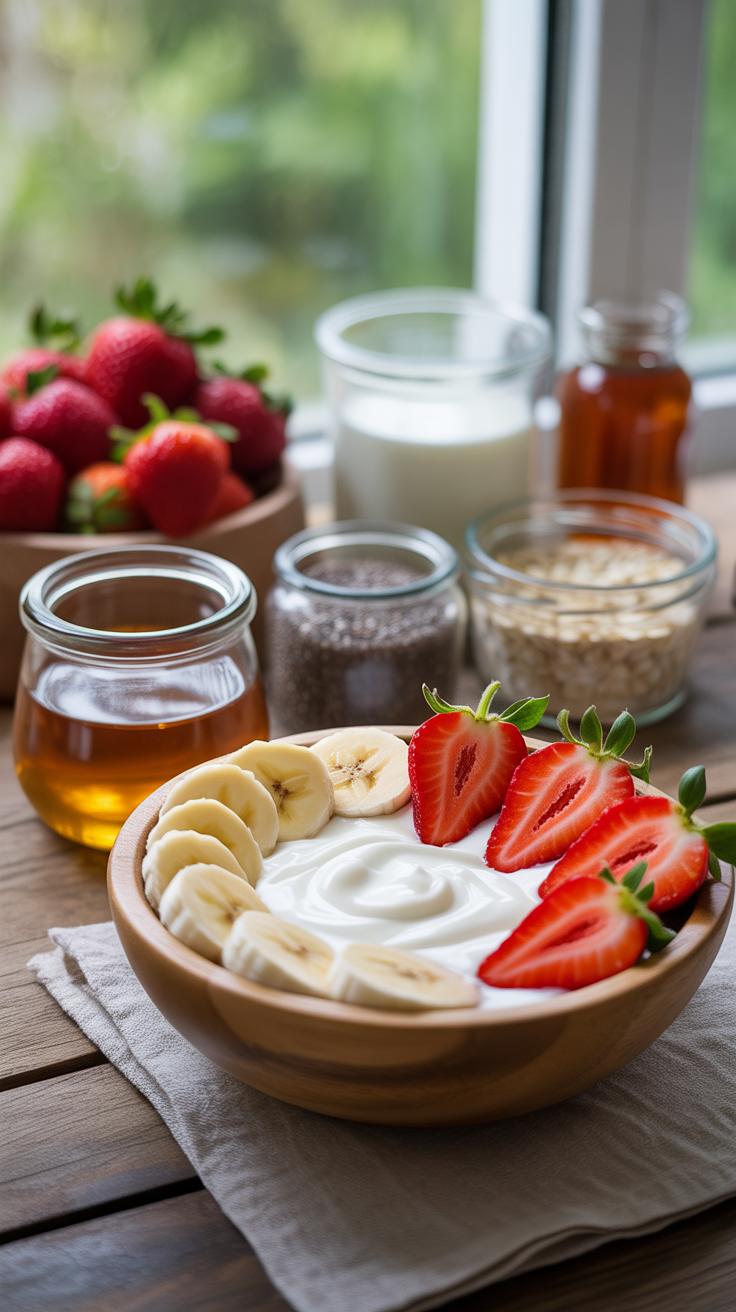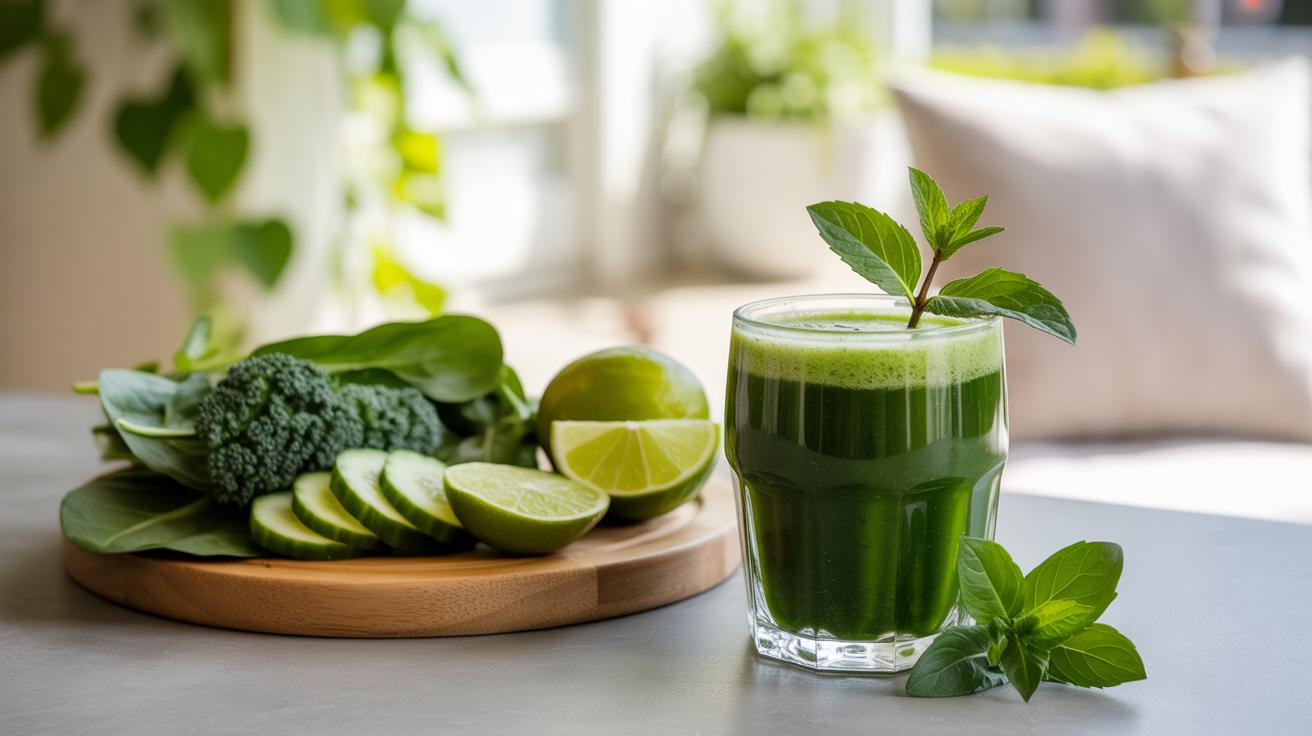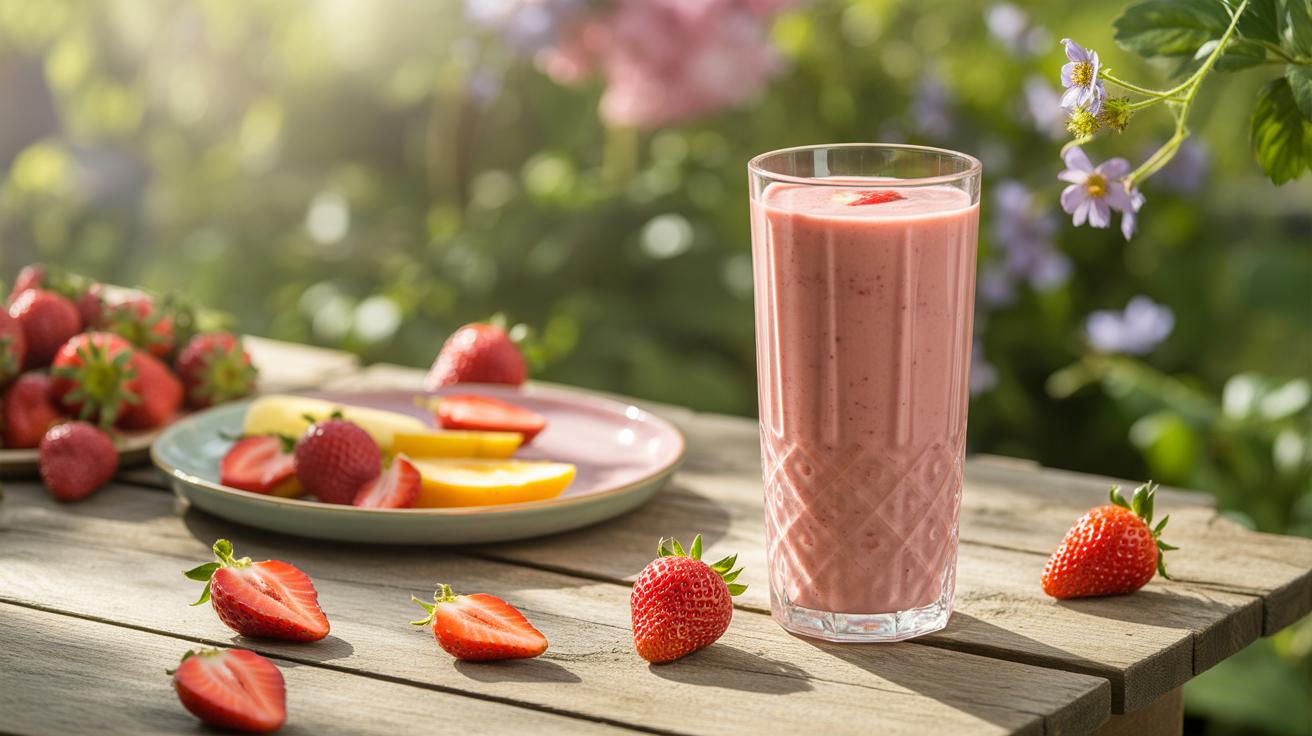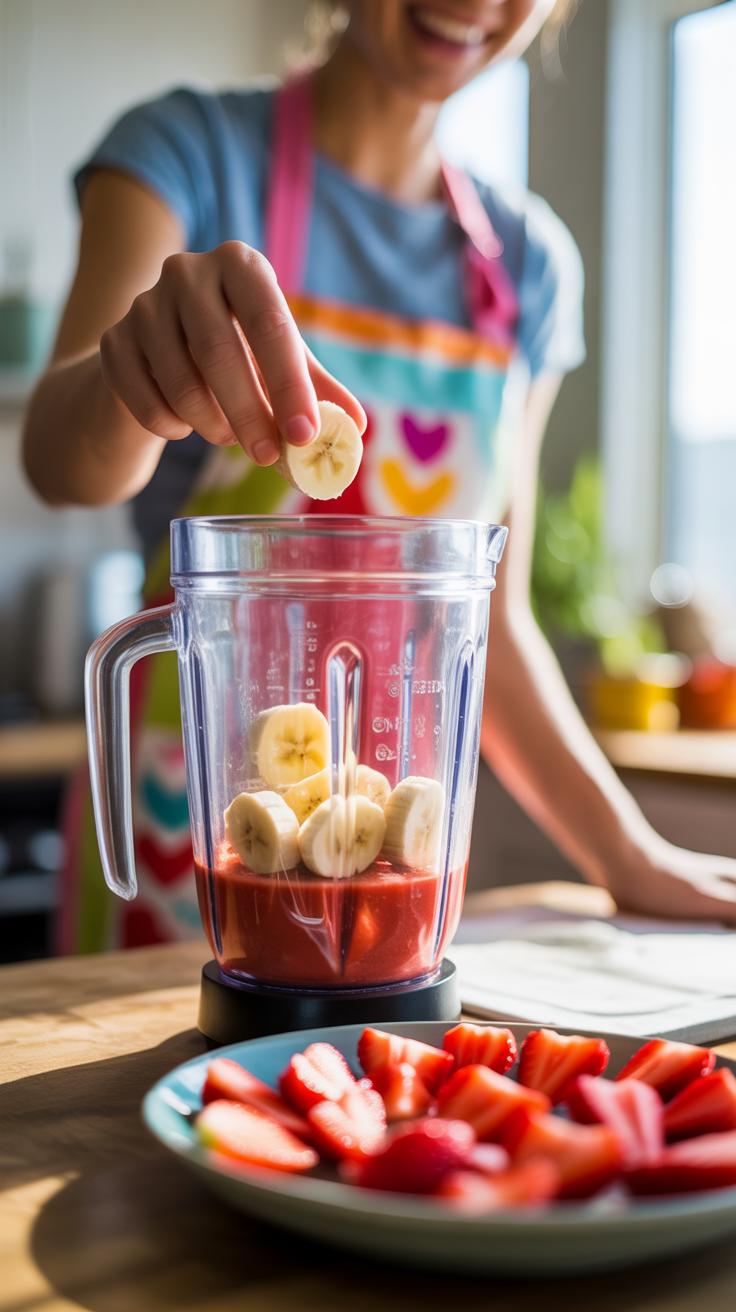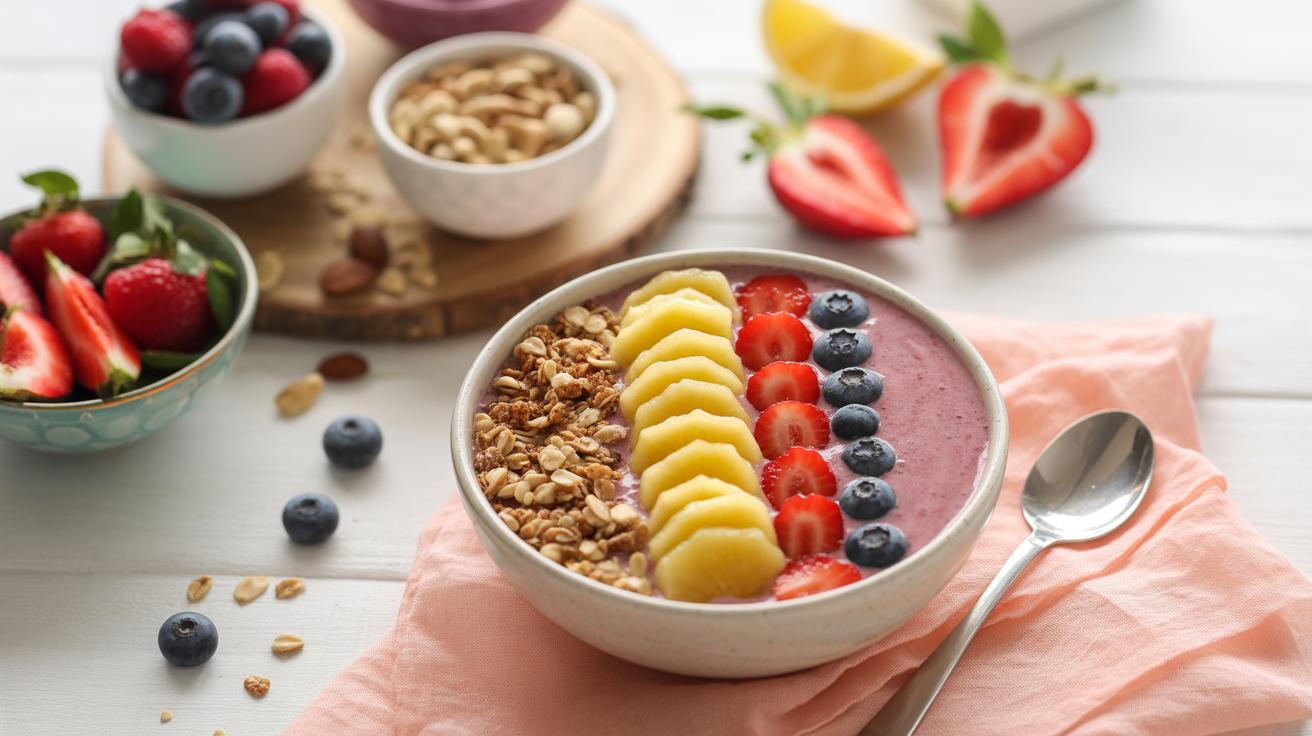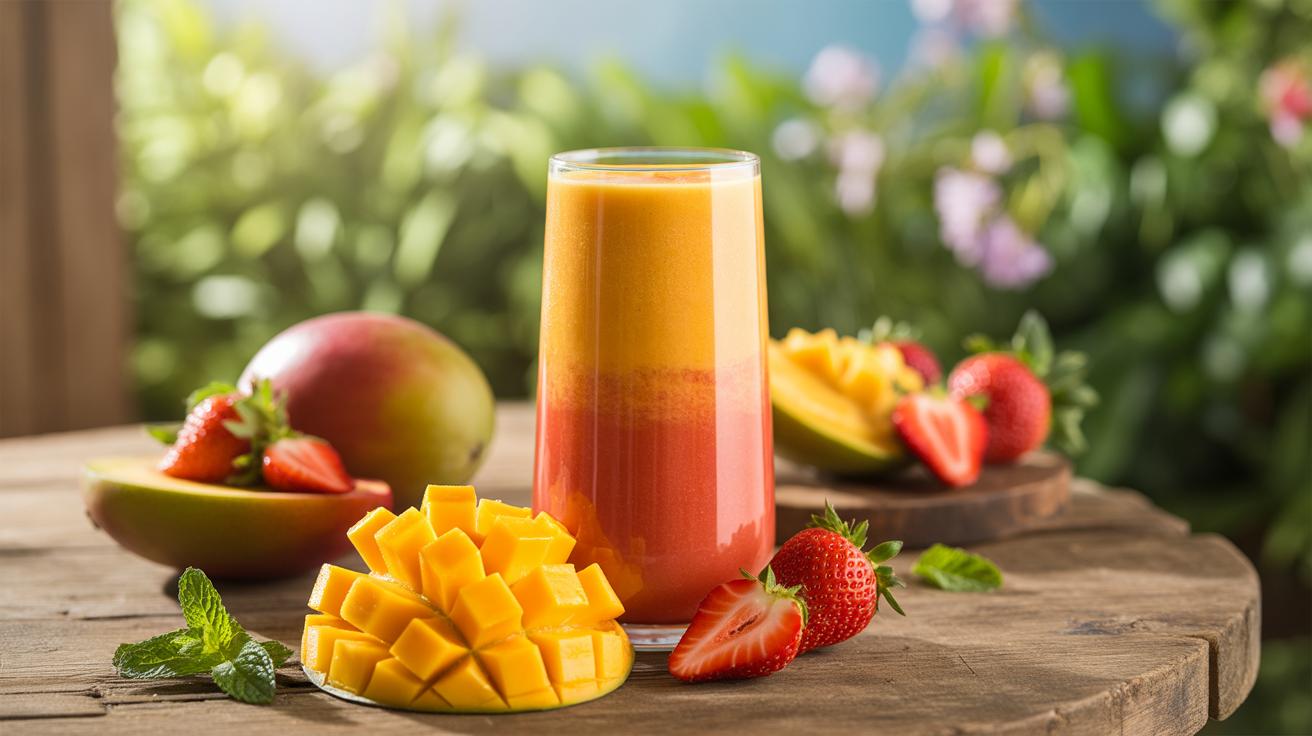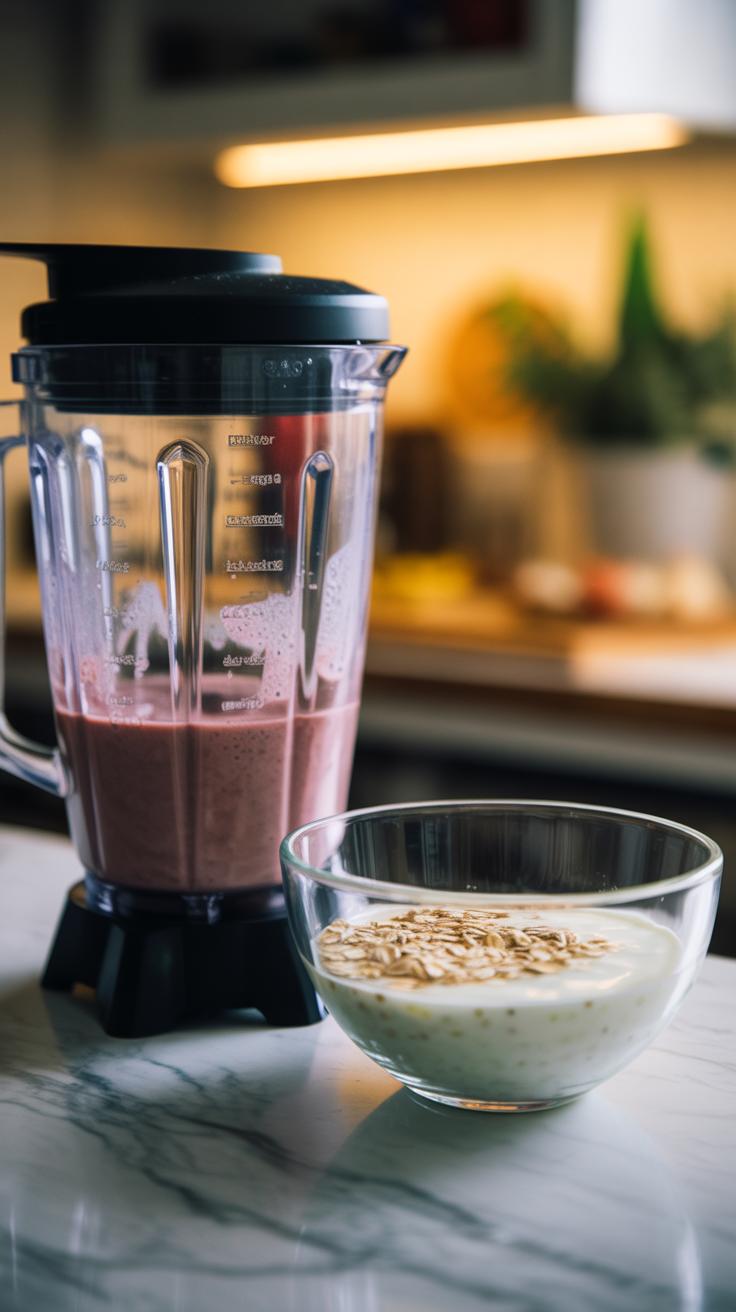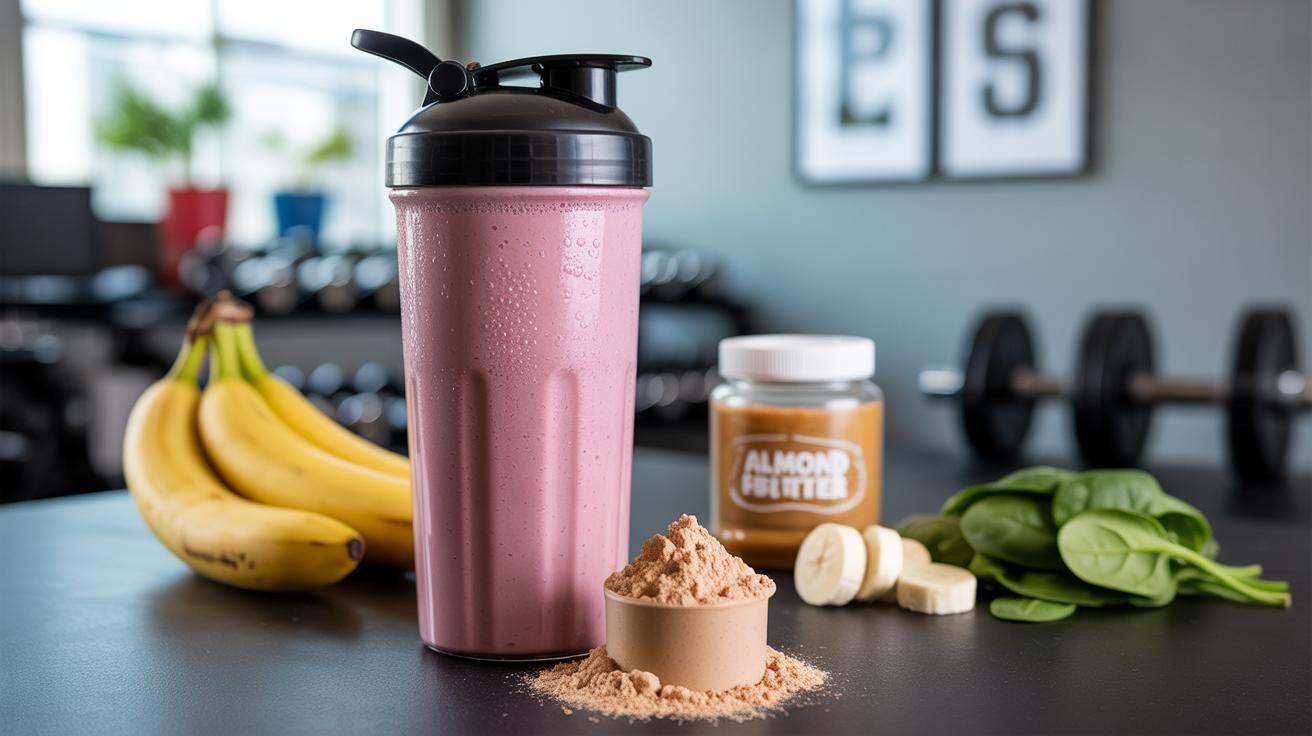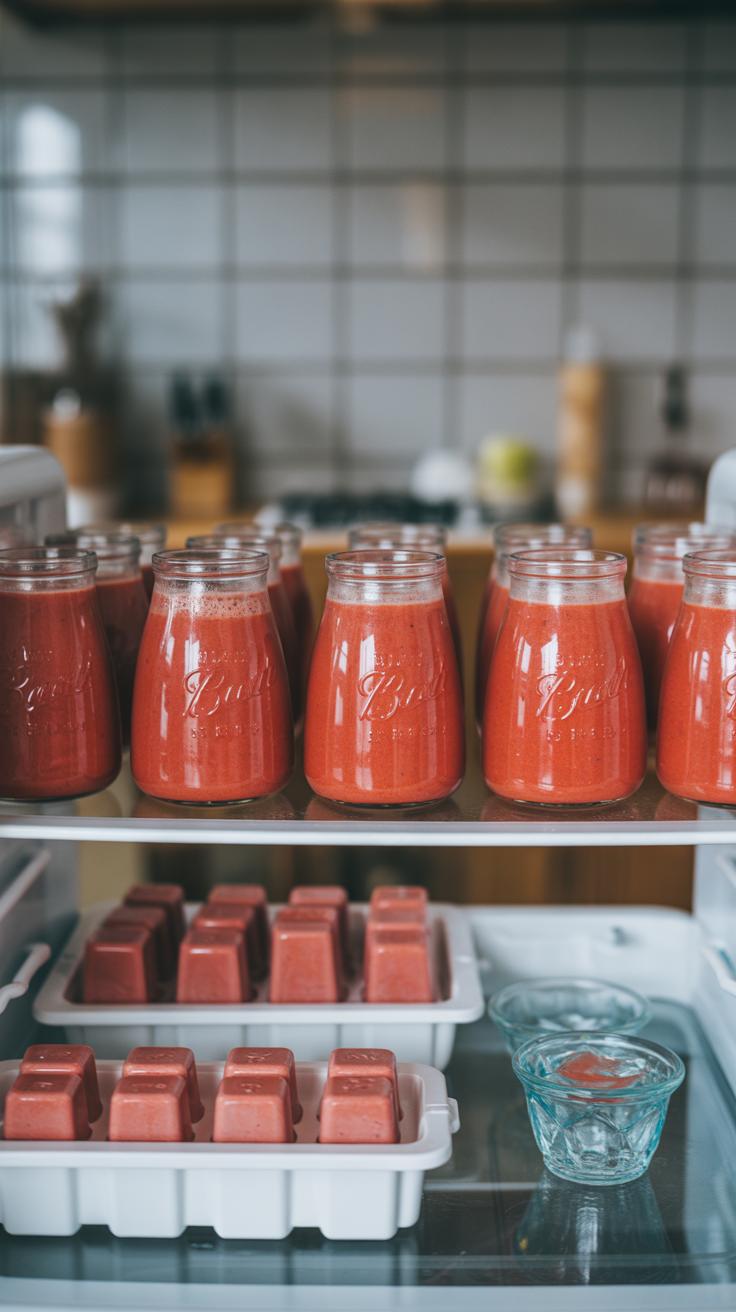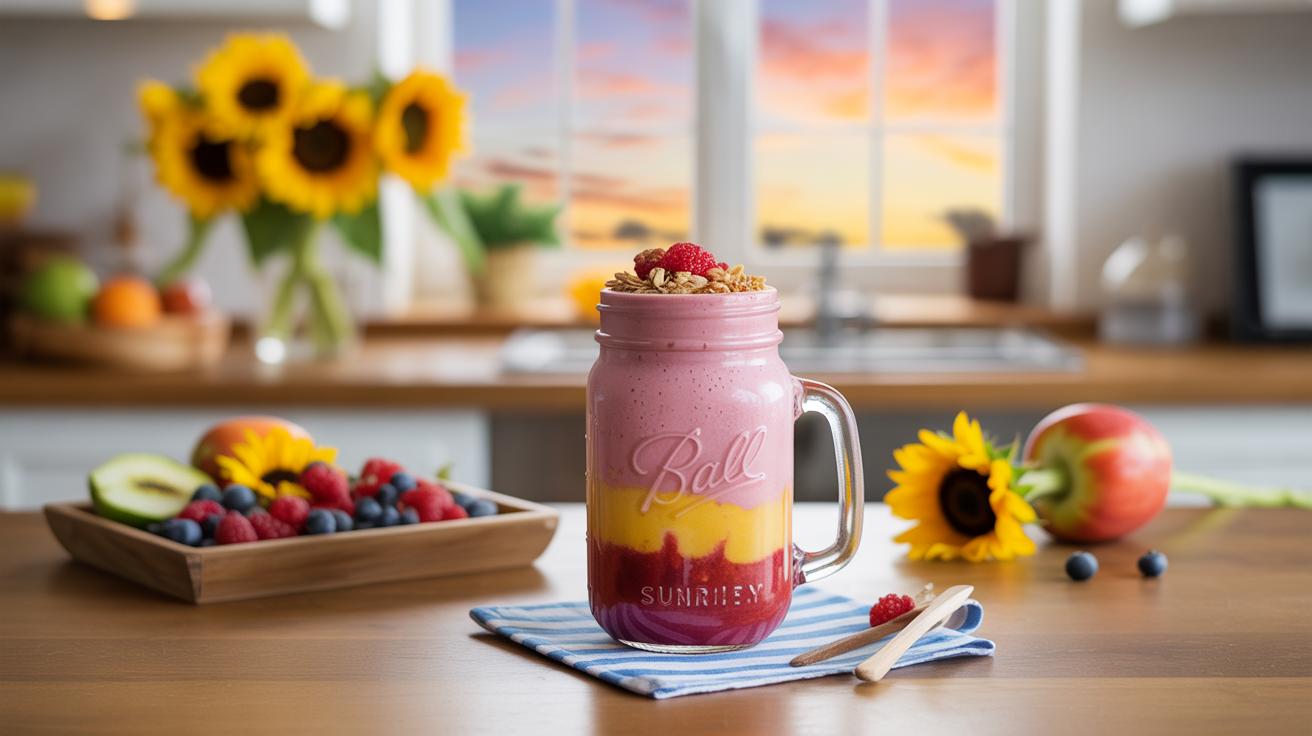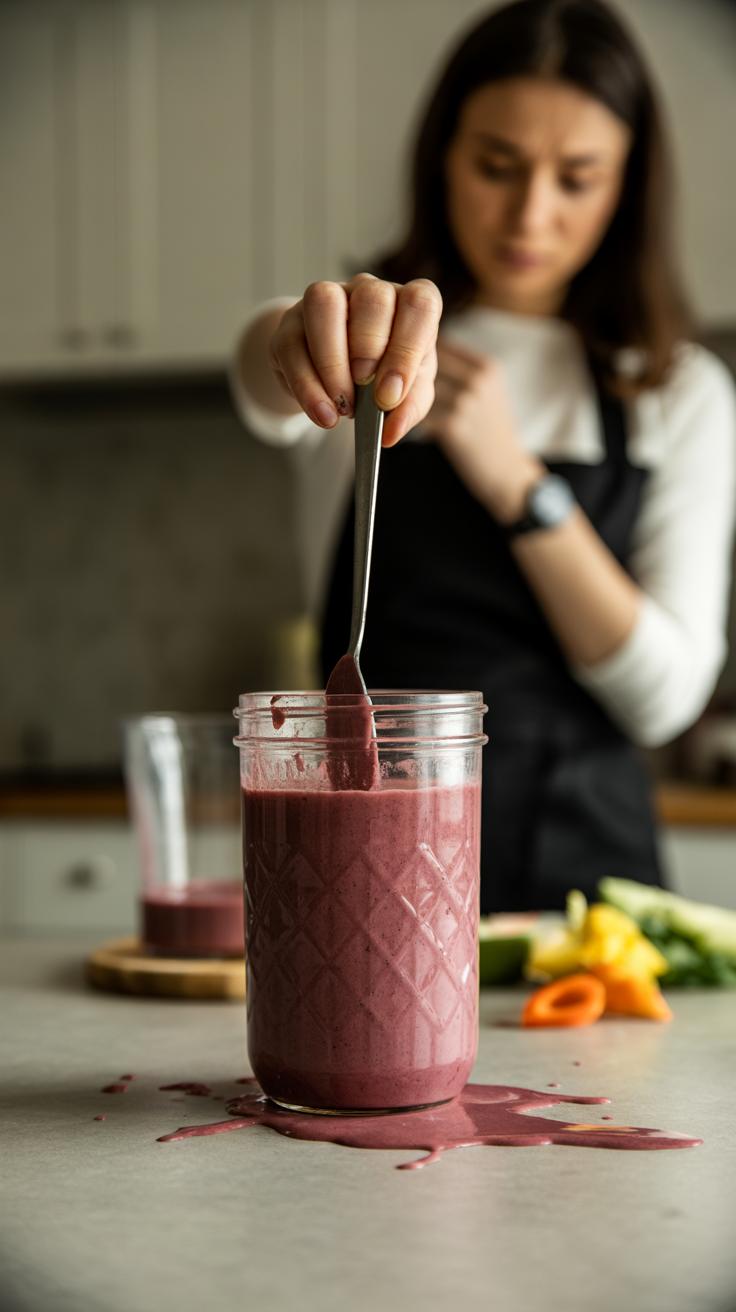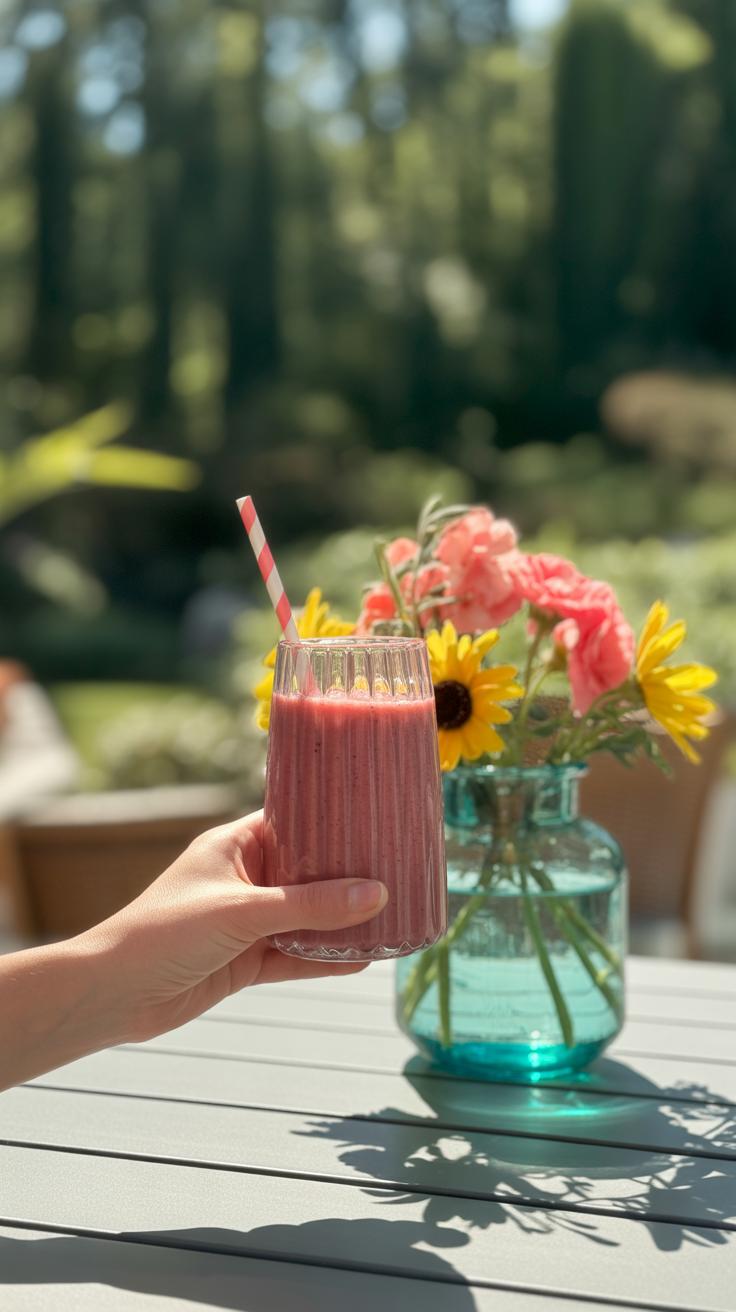Introduction
A strawberry banana smoothie makes a great breakfast choice. It combines the natural sweetness and nutrients of strawberries and bananas into one refreshing drink. This smoothie is easy to make and can give you energy for the whole morning.
In this article, you will learn about the benefits of the smoothie, how to choose ingredients, and tips to make it just right for you. Whether you want a quick snack or a healthy meal, this smoothie fits well.
Benefits of Drinking a Strawberry Banana Smoothie
A strawberry banana smoothie does more than just taste good. It’s a simple yet powerful way to fuel your day. When you blend strawberries and bananas, you’re mixing two nutrient-rich fruits that together offer a range of health perks.
First, the energy boost is noticeable. Bananas provide natural sugars that release steadily, giving you sustained energy instead of the quick spike and crash you get from processed sugars. This makes it a great choice for breakfast.
Nutrition-wise, you get fiber, vitamins, and minerals in one easy drink. It’s all quite convenient, especially if mornings feel rushed and eating a full meal seems impossible. Plus, smoothies like this can fit into nearly any diet, supporting weight management or just a more balanced lifestyle.
One thing I’ve noticed is how it can help with digestion thanks to the fiber from both fruits. That’s probably why I feel lighter and clearer after drinking one regularly. It might not fix everything, but it definitely nudges you toward better habits without feeling like a chore.
Why Strawberries Are Good for You
Strawberries are more than just a sweet addition. They’re packed with vitamin C, a key player in keeping your immune system responsive. Eating strawberries regularly might make you less prone to minor colds or fatigue, though it’s not a guarantee.
They also hold antioxidants that combat oxidative stress in the body. This means they can help protect your cells from damage, possibly slowing some effects of aging. I sometimes wonder if it explains why few smoothies that include strawberries leave me feeling refreshed rather than bogged down.
There’s more—strawberries contain manganese and folate, both useful in metabolism and cell repair. These nutrients, though present in small amounts, contribute to overall health in a subtle way. You don’t notice it daily, but over time, the effects stack.
The Nutritional Value of Bananas
Bananas are easier to overlook as a superfood, but they offer some solid nutrition. For one, they’re a good source of potassium, essential for heart health and muscle function. If you’ve ever cramped mid-morning or post-workout, potassium can make a difference, though it’s not a cure-all.
They also provide fiber, which supports digestion and helps maintain stable blood sugar levels. This fiber content is, to me, one of those things you appreciate more when you look back at how your digestion changes with better eating habits.
Vitamins B6 and C in bananas help with nervous system function and skin health. Eating bananas regularly could support these systems quietly, without you necessarily noticing any drastic changes. Sometimes, the simplest things carry the most value, even if subtly.
Choosing the Best Ingredients for Your Smoothie
Picking Fresh Strawberries
When it comes to strawberries, freshness really makes a difference in flavor. You want berries that feel firm but not hard—soft ones might seem sweet but could be overripe or starting to spoil. The color matters too; look for strawberries with a deep, even red shade. If you spot a lot of white or green near the stem, that usually means they’re not fully ripe. Sometimes, overly shiny strawberries might have been treated or washed recently, so don’t be fooled by appearances alone.
And smell them, if you can. Sweet, fragrant strawberries usually mean better taste. Oddly, sometimes the biggest strawberries don’t taste the best. I’ve had smaller ones steal the show because they were fresher or naturally sweeter. So, it’s fine to be a bit picky here.
Selecting Ripe Bananas
Bananas play a huge role in the smoothie’s texture and sweetness. You want bananas that have turned mostly yellow with a few brown spots—this is usually when they are the sweetest and easiest to blend. Green bananas can feel kind of waxy and won’t bring as much natural sugar. On the other hand, if your banana is too brown or mushy, the texture might get off-putting, though some people like that intense sweetness.
Give them a gentle squeeze. They shouldn’t be rock-hard, but overly soft spots aren’t great either. The skin should peel easily without tearing. Sometimes, a banana that’s on the edge of ripeness has the best balance of flavor and consistency, but the exact moment to pick can feel a bit personal.
Between the strawberries and bananas, choosing the freshest and right-ripe versions of each can really make or break your smoothie. It’s about balancing firmness, flavor, and a bit of intuition—maybe a little trial and error will help you find your perfect combo.
Necessary Tools and Equipment
To make a strawberry banana smoothie, you need a few basic tools that will make your prep smooth and less frustrating. First off, a blender is pretty much the heart of this process. Without it, your smoothie would just be a bowl of mashed fruit and liquid. A good blender helps mix everything evenly, creating that creamy texture you’re aiming for.
Using a Blender
The blender isn’t just a gadget; it’s the difference between a drinkable smoothie and something chunky or watery. When choosing one, think about power—around 500 watts or more tends to handle frozen fruit better. Also, consider the size of the jar. If you’re often making just one serving, a smaller jar works fine. For bigger batches, you might want larger capacity. I once tried a small blender for frozen strawberries, and it barely managed. So personal experience says, don’t skimp on power if frozen fruits are your go-to. Transparency of the jar helps to watch the blending progress, too. Sometimes you need to stop and stir, which is annoying if you can’t see inside.
Other Helpful Tools
Apart from the blender, some modest kitchen tools come in handy to save time and keep things tidy. Measuring cups and spoons ensure you don’t go overboard or underestimate ingredients, keeping flavors balanced. A cutting board and a sharp knife make prepping fruit easier and safer—no more squished bananas on your countertop. It’s easy to overlook how much these small tools speed things up. You could just toss ingredients in, sure, but a little prep helps keep your kitchen clean and your smoothie consistent. Don’t ask me why, but I always reach for measuring spoons—it feels oddly satisfying.
Step by Step Guide to Making Your Smoothie
Preparing the Fruit
Start by giving your strawberries a good rinse under cold water. It’s easy to forget how much dirt or residue can linger, so take your time here. After washing, remove the green leafy tops by pinching or slicing them off. You don’t need to be super precise—just get rid of the leaves. For bananas, peel them carefully, making sure to remove all the strings or any dark spots you don’t like. Then, slice the bananas into medium-sized chunks; smaller pieces blend better, but not so tiny that they turn mushy before blending.
Cut the strawberries into halves or quarters, depending on their size. Large strawberries can overwhelm the texture if left whole. Keep in mind, the fruit prep might take a bit longer if yours is fresher or less ripe—you want softness but not mushiness. I often check the bananas for spots to decide how ripe they are. Somehow, those spots make the smoothie sweeter, though some might prefer a less sweet taste.
Blending and Serving
Next comes the blending, which you might think is straightforward, but it’s kind of an art. First, add your prepared fruit to the blender. Then pour in your chosen liquid—water, juice, or milk—slowly. Start with around half a cup; you can always add more if it looks too thick. Press the blend button and watch how the fruit breaks down. You might need to pause and scrape down the sides to avoid chunks.
The goal is a smooth texture without being watery. Some days, I like a thicker smoothie you can almost eat with a spoon; other times, a thinner drink is more refreshing. When it looks just right, pour it into your favorite glass straight away—fresh is best. If you wait too long, it can separate or lose its bright flavor, which would be a shame after all that prep.
Adding Extra Ingredients for More Flavor and Nutrition
Choosing what to add to your strawberry banana smoothie can really change the whole experience. Yogurt, for instance, adds a creamy texture that milk alone won’t achieve. I usually reach for plain Greek yogurt to keep it tangy but rich, though flavored ones can sweeten the mix—just be cautious as they sometimes overpower the fruit.
Milk choices shape your smoothie’s taste too. Whole milk gives a fuller mouthfeel, while almond or oat milk offers lighter flavors and a bit of nuttiness. Juice can also work, like apple or orange, adding sweetness but sometimes making the smoothie more liquid than thick.
For natural sweetness, honey feels like a classic booster. A drizzle here can take the edge off tart strawberries without turning the smoothie into a dessert. Protein powder is another way to enhance nutrition—it’s handy if you want your breakfast to last longer or support muscle health. Pea or whey protein both blend well, but some powders can alter flavor or texture unexpectedly.
What do you prefer? More creamy or more fruity? Sometimes I find myself debating between richer and lighter, and the choice depends on mood or even the time of year.
Tips for Making Your Smoothie Smooth and Creamy
Using Frozen Fruit
Frozen strawberries and bananas aren’t just convenient; they really change the texture of your smoothie. When you use frozen fruit, it thickens the blend naturally, giving it that creamy feel without needing too much extra liquid. You might think fresh fruit is always better, but frozen ones add a chill and density that fresh fruit often lacks—unless you add ice, which can water things down.
Plus, frozen fruit keeps your smoothie cold longer, which can be nice first thing in the morning, especially if you’re someone who likes a cold drink but doesn’t want it diluted fast. It’s almost like they act as tiny ice cubes, but more flavorful. Sometimes I forget to freeze bananas ahead, and the smoothie ends up runnier than I hoped. So, a quick tip: peel and slice bananas before freezing to make the process smooth—pun not intended.
Blending Techniques
When it comes to blending, the timing and speed make a big difference. If you blend too fast and briefly, you might still end up with lumps. Too slow, and your smoothie won’t fully come together. I usually start on a lower speed for about 30 seconds to break down big chunks, then ramp it up for another 30 seconds or so until the texture looks even. But really, it depends on your blender’s power.
You can pause and scrape down the sides to get all the fruit evenly mixed. Sometimes I hesitate letting it go too long, worried it might warm up the smoothie or overblend, thinning it out more than desired. Most of the time, though, a quick two-step blend does the trick, giving you that smooth, creamy texture you want without any unexpected lumps or graininess. Have you noticed some blenders just get the job done better? It’s worth experimenting with your own machine’s quirks.
How to Store and Reuse Your Smoothie
Refrigerating Your Smoothie
If you don’t finish your strawberry banana smoothie right away, keeping it fresh can be a bit tricky. Usually, the fridge can keep your smoothie safe to drink for about 24 to 48 hours. Beyond that, the vibrant taste and nutrients might start to fade. I’ve noticed that storing it in an airtight container helps preserve the flavor better—glass jars with tight lids work well. Leaving it exposed can cause oxidation, and then you’ll get that dull brownish color, which is neither appetizing nor healthy.
Try to fill your container close to the top to limit air inside. And before drinking, give it a little shake or stir because separation is natural—smoothie parts just like to do their own thing.
Freezing for Later Use
Freezing your smoothie is a decent option when you want to save it for later, especially if you made a large batch. I’ve found it’s best to freeze it in small portions, maybe in silicone ice cube trays or freezer-safe containers. This way, you can thaw just what you want without waste.
Thawing properly makes a difference too. Let it sit in the fridge for a few hours instead of rushing with the microwave. If you thaw it too quickly, the texture can become grainy or watery, and that fresh fruit taste you enjoyed might dull a bit. When it’s ready, give it a quick blend or stir to bring back some smoothness.
Storing your smoothie right usually means you get to enjoy that strawberry banana goodness a little longer, even if life interrupts your morning plan.
Common Mistakes to Avoid When Making Smoothies
Using Overripe Fruit
It’s tempting to grab those super soft, browning bananas or mushy strawberries, thinking they’ll make your smoothie sweeter. While overripe fruit can add sugar, too much of it often leads to a mushy texture that some people find off-putting. The taste might turn overly sweet but also a bit fermented or sour, which isn’t very pleasant first thing in the morning. I’ve noticed that when I use fruit that’s just a little softer than firm, the smoothie feels fresher and tastes brighter. If you’re unsure, try mixing in some fruit at different ripeness levels—sometimes a slightly less ripe banana balances things out well. Giving your fruit a quick sniff and visual check can save you from ending up with a smoothie that’s a bit too heavy on the sweetness or oddly textured.
Adding Too Much Liquid
Pouring more and more milk or juice hoping to fix thick blender chunks is a common move. It often backfires because your smoothie turns watery, losing the creamy texture that makes strawberry banana blends so satisfying. I think the trick is to start with less liquid than you think you need and add in small amounts to reach the right consistency. Sometimes, adding frozen fruit instead of ice helps keep that thickness without diluting taste. Also, consider that bananas naturally thicken the smoothie, so balancing them with just a splash of liquid works better than a cup or two all at once. Don’t rush the blending—giving your blender a pause, stirring, then blending again can make things smoother without extra liquid.
Enjoying Your Strawberry Banana Smoothie
The strawberry banana smoothie isn’t just a drink. It can fit into your day in different ways, depending on what you need or prefer, which is kind of nice. You might have it as a light breakfast on days when you don’t feel very hungry in the morning or as a mid-morning snack that keeps you going until lunch.
Sometimes I like to treat it almost like a mini meal paired with something a bit more solid. For example, a slice of whole-grain toast with peanut butter or a small bowl of oatmeal complements the smoothie’s sweetness with some texture and extra fiber. It adds a satisfying feel without making the breakfast too heavy.
If you want a complete meal, consider pairing the smoothie with these foods:
- Greek yogurt topped with nuts or seeds for protein and crunch
- A boiled egg for a quick hit of protein and healthy fats
- A small serving of cottage cheese which balances the smoothie’s fruitiness
- A handful of almonds or walnuts on the side
Taking the smoothie on the go is easier than I thought before I tried it. Use a good-quality insulated bottle so it stays cold and fresh. Drinking it hours later can sometimes change the texture. That can be a bit off-putting, but it’s not the end of the world.
When packing your smoothie, try freezing it overnight in your bottle. By morning, it’s partially thawed and you get a nice cool texture. You could also bring some cut-up fruits or raw veggies for a simple snack alongside.
Have you ever noticed how having a smoothie ready to grab can actually encourage you to make healthier choices the rest of the day? It’s like a little nudge that sets things in motion, even if you’re rushing out the door.
Conclusions
A strawberry banana smoothie is not only delicious but also full of nutrition. It provides vitamins, minerals, and energy to start your day right. You can easily make it at home with simple ingredients.
Try different ways to make your smoothie special. Add ingredients you like and enjoy a refreshing breakfast that keeps you energized and satisfied.



